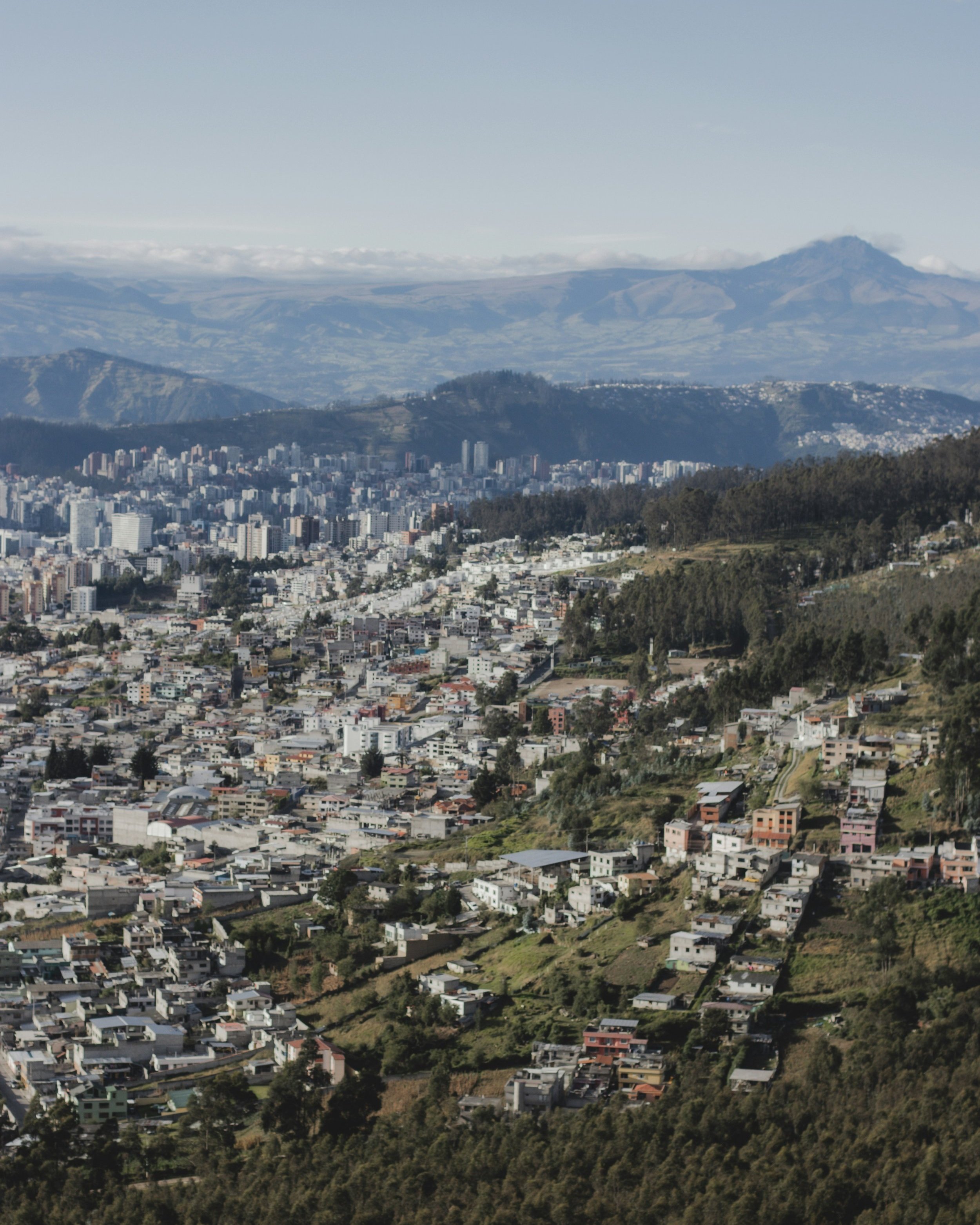Quito, Ecuador: a city like no other…
From the rooftop of the glorious and luxurious Hotel Casa Gangotena, I gazed out over Quito, the beautiful city in the north of Ecuador. Lights sparkle up the sides of the volcanic mountains which ring the city … they twinkle brightly against the navy blue velvet sky, and highlight the peaks and valleys of neighbourhoods far and near to the old town. Historic churches with their belltowers illuminated grace every direction. The Virgin of Quito gazes peacefully down from the top of El Panecillo (the ‘bread roll’) – a steep hill amongst the massive mountains which surround the city. She has stood there since 1976 but is a copy of an altarpiece originally made in 1732.
Is it something to do with the altitude? The sky is so clear up at 2850 metres… the stars and the moon seem much brighter and I almost feel that I could do without the electric lights and still easily see my way around.
Is it the location? Quito is virtually on the equator line and yet the temperature at this altitude is not what you would expect for the equator– it is cool or even cold, especially at night. And you do get snow at the equator – the mountains surrounding the city have white tops throughout most of the year! Back in 1735, the French Geodesic Mission announced that an area about 26km north of Quito was literally the centre of the earth… unfortunately, modern GPS has determined that they were out, but only by about 200 metres! So, a half hour drive from the centre of the city will take you to not one but two monuments to this interesting fact. One is a big concrete, iron and stone statue. The other is the Intinan Solar Museum which has various exhibitions and dioramas relating to Ecuadorian culture and some touristy things relating to the concept of the equator.
Or maybe it is just that the Spanish had such lovely architecture and it has stood the test of time for the past 400 or so years since they raised this city on top of some ancient Inca ruins. There are over 20 historical churches, convents and monasteries in the historic Old Town of Quito and it is because of them that the area is a UNESCO World Heritage site. The Compania de Jesus (Jesuit) Church is almost entirely covered in gold leaf inside and is one of the most significant examples of Spanish Baroque architecture in all of South America. It has recently undergone a renovation which has apparently made it even brighter and shinier – it is quite overwhelming to see.
And then there are the mountains… Quito is in the foothills of the northern Andes and it is surrounded by volcanoes - a lot of them are still active. The two biggest in the area at Pinchincha (4794 metres) and Cotopaxi (5897 metres). Despite the fact that the Quito suburbs now crawl up the eastern side of Pinchincha, the city suffered only ash damage from the last eruption back in 1999. Cotopaxi is also active but has not had a major eruption in over 100 years… it is the centrepiece of a national park and it is easily visible from the city, with a perfect cone shape topped by glacial snow. You always know where you are in the city – you just look for the majestic Cotopaxi, peaking out of the clouds.
It is difficult to decide what is the most attractive thing about Quito – but it certainly has something which makes me want to visit it again…










